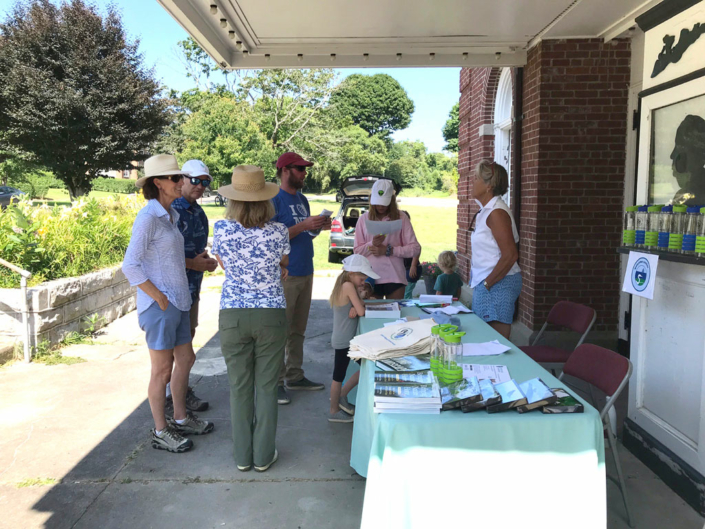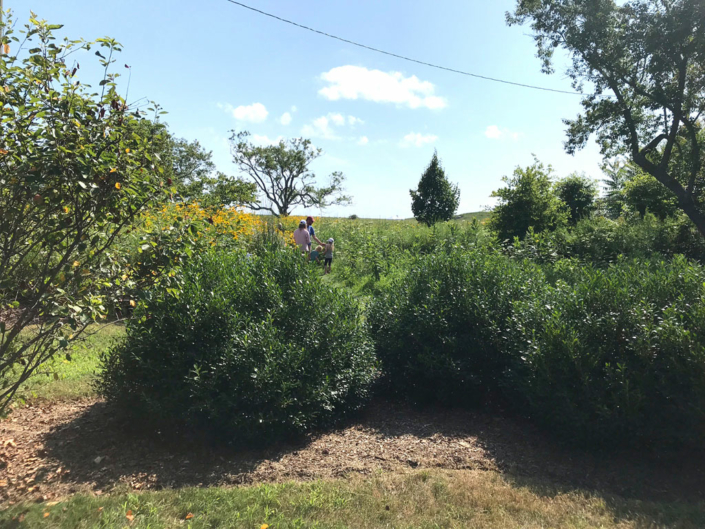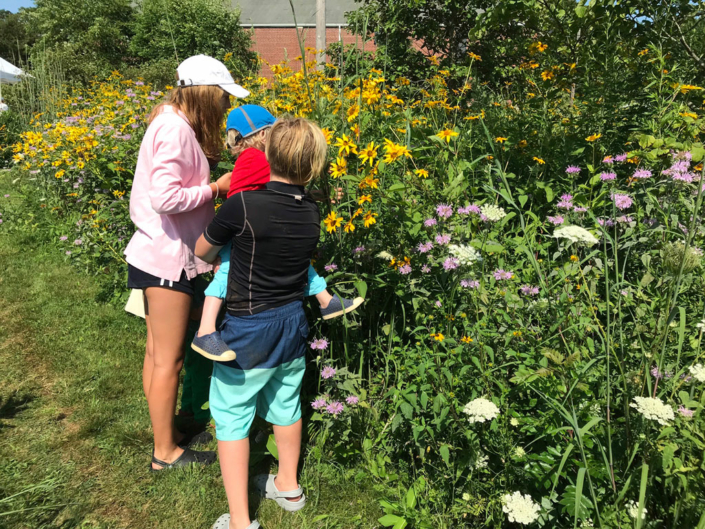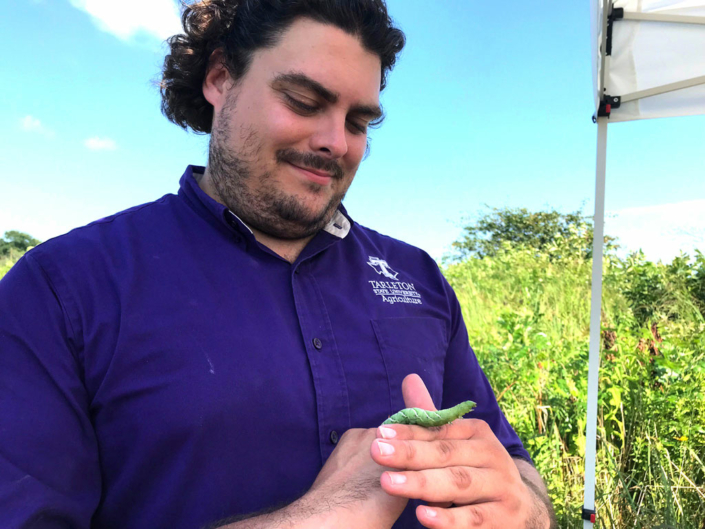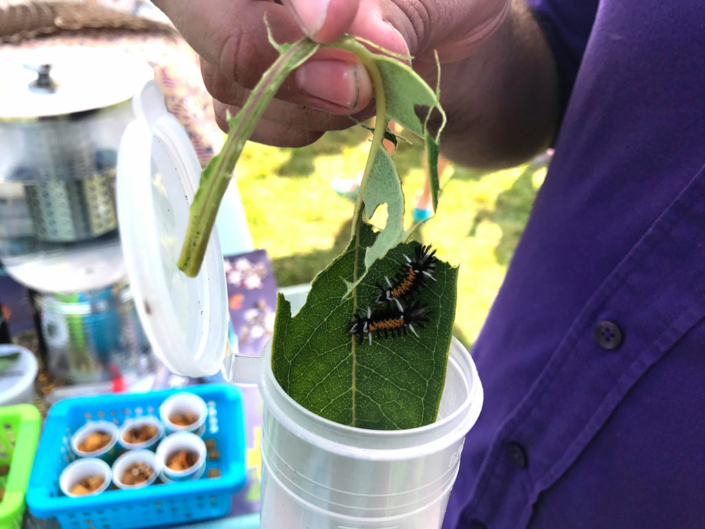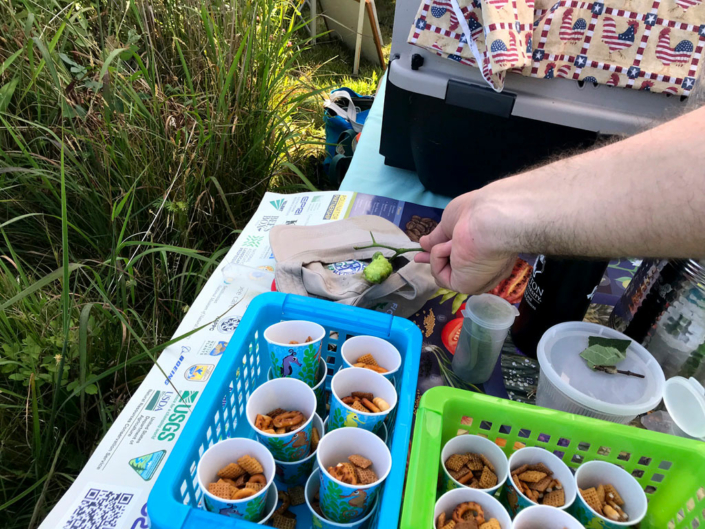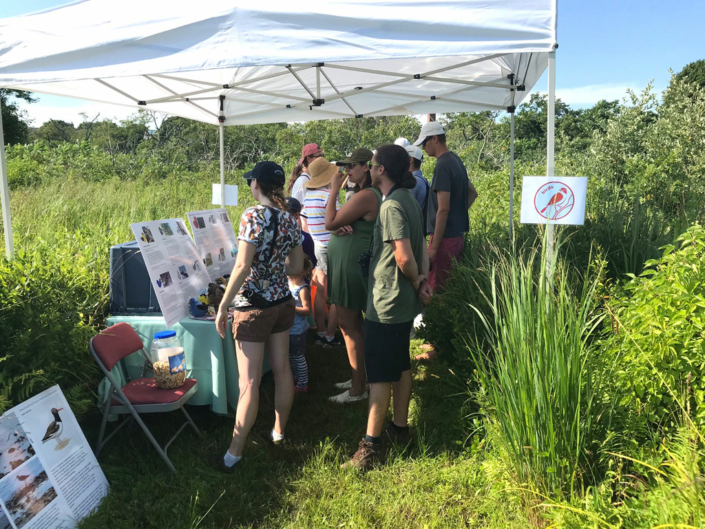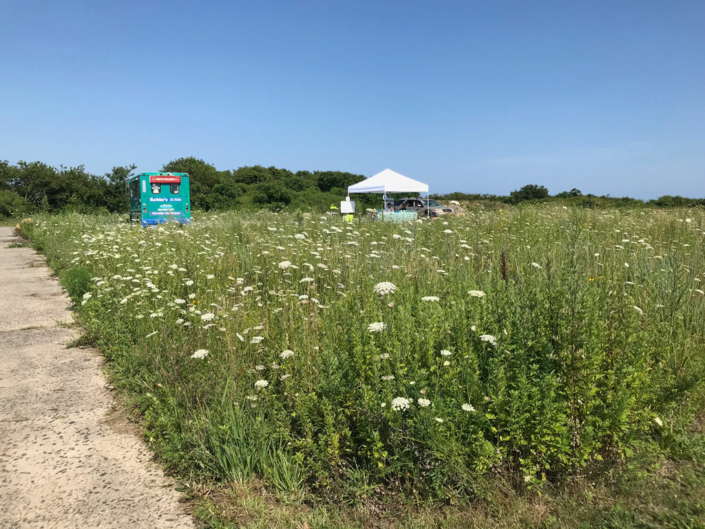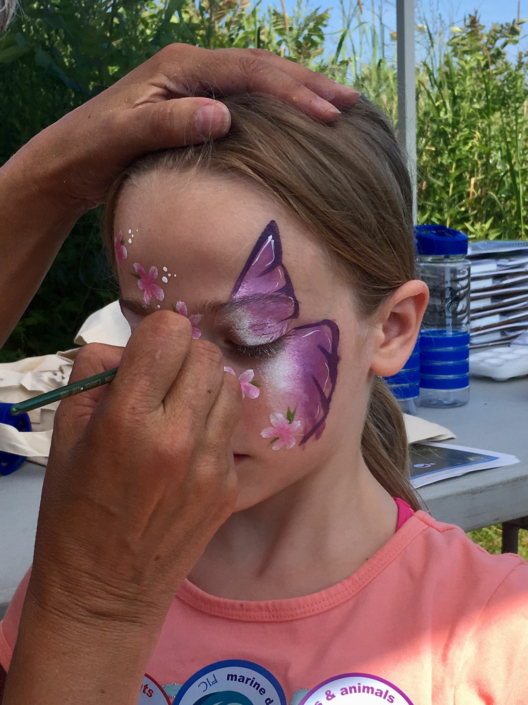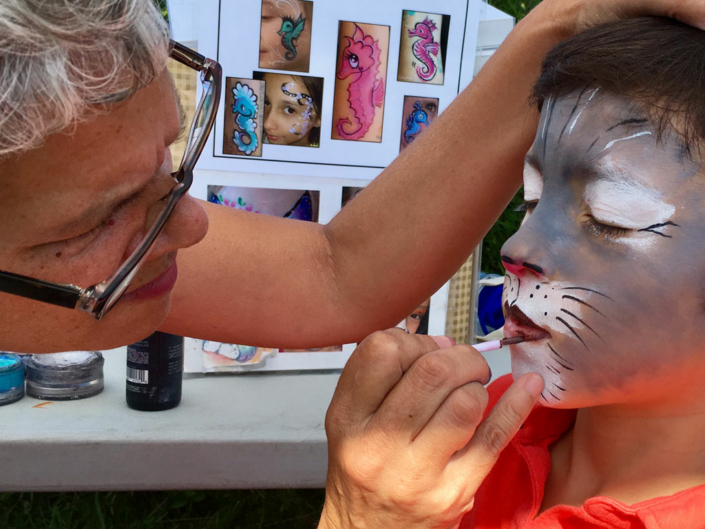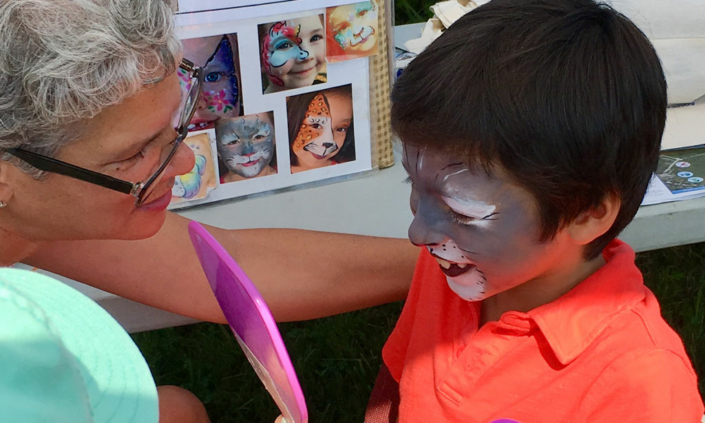Conservation on Parade 2019
Kim Hargrave, education director at Denison Pequotsepos Nature Center in Mystic, Conn. explains to children how owls can rotate their heads 270 degrees. FIConservancy Photos
Live animals, giant tomato plant-eating caterpillars, birds and butterflies were on display Sat. Aug. 3 at FIConservancy’s second annual “Conservation on Parade”.
Parents and children strolled through meadow paths in the restored grassland of the Parade Grounds visiting white tents that popped up among native grasses and wildflowers. Children learned about living creatures from land and sea, and hopefully learned what happens to marine animals and our coastline when trash is discarded into the sea.
The extra large green caterpillar pictured below is the tobacco hornworm or the Carolina Sphinx moth in its adult form. This caterpillar feeds on plants in the nightshade family, including tobacco, potato and tomato, and was found on a tomato plant in the garden of FIConservancy President Tom Sargent.
The other caterpillar picture below is the milkweed tussock caterpillar. It feeds on tougher, older leaves of milkweed plants. (Monarch butterflies eat younger, tender leaves.) You can touch the milkweed tussock caterpillar, but they are poisonous if ingested.
Children also flocked to the face painting artist who creativity was appreciated by all! (Wes Walters face painting photos)
Thanks to Adam Mitchell, PH.D., assistant professor of entomology at Tarleton State University in Texas, for this information and for participating in this event.
